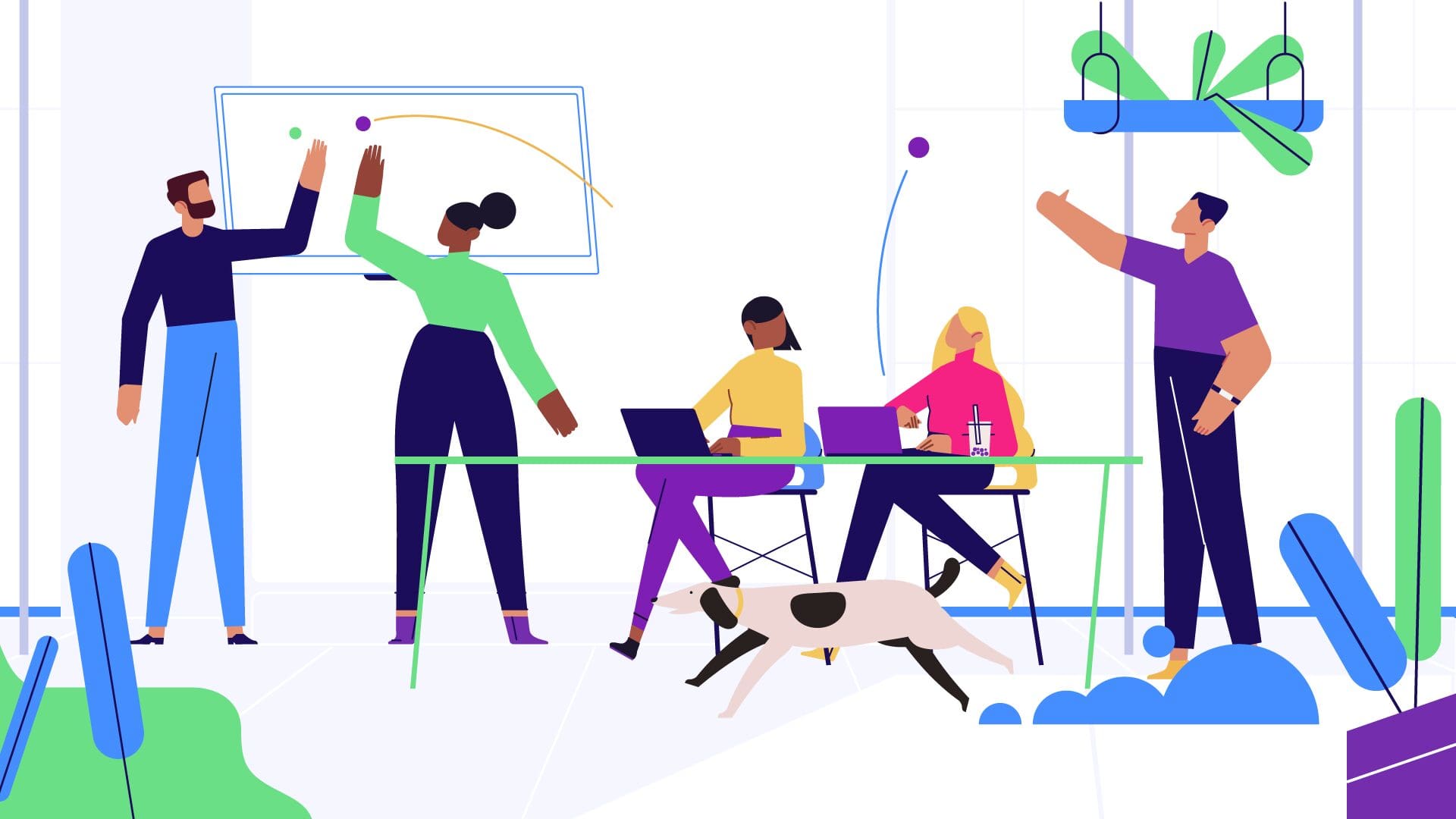There’s a new phenomenon taking the working world by storm. Return-to-office resistance, or FORTO (fear of returning to the office), is the newest obstacle facing companies looking for a path forward after the pandemic.
And it makes sense. During two years of intermittent lockdowns, we all got exceptionally comfortable with a home office. For a great deal of us — it’s proving hard to let go: a recent study revealed 91% of employees in the US aren’t willing to sacrifice the ability to work from home in the future.
So what’s behind return-to-office resistance? And how can you, as an employer, help your team rekindle their love for office work?
Let’s dive in.
We’re all still recalibrating to social situations and the idea of being surrounded by people so frequently can be daunting and anxiety-inducing.
1. Understand the causes
There are three main reasons behind return-to-office resistance:
Flexibility
The ability to work from home has been life-changing for millions of people. It’s given us unprecedented control over our work/life balance, our daily routine, and our commute (or lack thereof!) You can imagine why, therefore, returning to the office feels like a step backward for many people. Why should I sacrifice my newfound flexibility for a more rigid system?
Habits
Of course, much of this resistance—and indeed the protection of flexibility—comes down to the habits we built up over the last few years. Habits, once crystallized, are famously hard to shift.
With the home office as the go-to, many of us are resisting change, even when that change constitutes reverting to the norm.
Health
We’re entering the worst flu season in 13 years and a lot of us are – for obvious reasons – still primed to avoid viruses and illness wherever possible.
On the mental health front—the world is also gradually recalibrating to social situations (of which we had a notable lack for a couple of years). The idea of being surrounded by people so frequently may—to some—be daunting and anxiety-inducing.
The truth is, your employees may be experiencing a combination of these. In the next step, you’ll dig a bit deeper into their exact feelings surrounding office-based work.
2. Kickstart the discussion
It’s time to be proactive about the return-to-office discussion.
Not only do you want to dig into the reasons for your employees’ resistance—but you also want to identify the degrees of support and resistance to hybrid work in the company.
Consider an all-hands open discussion on the topic, or send out an anonymous internal survey. Encourage team members to reach out personally if they have any concerns you might not have considered.
The goal is to get a granular understanding of each and every employee—their starting position, their concerns, and how they can be addressed.
Showing proactivity will assure your team that you’re taking their questions about returning to the office seriously, and leading the transition as responsibly and smoothly as possible.
3. Communicate the benefits
Once you’ve built up a clearer picture of your employees’ attitudes to returning to the office, you should refocus the conversation on the benefits of in-person work. And the benefits are numerous:
Being part of the company culture
The office is still undoubtedly at the heart of company culture. It’s where colleagues have those little water cooler conversations and engage in social interactions that just aren’t possible over Zoom.
Changing your environment
Getting out of the house regularly can do wonders for your mental health if you’re feeling stuck in a rut or finding it hard to motivate yourself. This is especially true for those who identify as “Integrators”—people less able to segment work life and home life.
Building relationships
One of the best parts about spending time in the office is that you immediately break out of your WFH work silo. Time in the office enables you to forge relationships with new colleagues—and in turn brings about new ideas, advice and opportunities to collaborate.
High-quality collaboration
In a world where everything seems to have gone online, we’re gradually starting to remember the joys of real-life collaboration. Online workshops were great as a backup, but there’s nothing quite like the real thing. A designer, a product person, an engineer, and a marketing specialist in the same room—that’s when the magic happens.
At Kadence, we see office work as yet another tool in our toolbox. It’s not a case of “two days in, three days out”—it’s ensuring the right team members are in for the right reasons. Done right—office work is fun, fulfilling, and productive.
4. Put well-being first
The causes underlying return-to-office resistance are completely legitimate. The pandemic has taken a toll on both our physical and mental health, with the WHO finding a **25% increase in prevalence of anxiety since the beginning of 2020.
That’s why you should make team members feel as comfortable as possible about the prospect of dipping their toes back into office work.
In terms of physical health: Flu-proof your office with disinfecting stations, good air circulation, and regular cleaning.
In terms of mental health: Aside from encouraging open conversations throughout the return-to-office process, consider a company-wide program with Mental Health Ambassadors or Champions who are responsible for checking in on employees’ mental well-being and cultivating a culture of psychological safety.
Before rushing to implement a system for hybrid work, you should make it clear to your team that you are putting their health and safety first.
5. Create a destination workplace
Your team needs to ***see why it’s worth coming into the office on occasion. Especially those who are resisting hybrid work the most.
That’s why creating an absolutely kick-ass workplace will be your biggest asset in the transition to hybrid.
Here are some of the hallmarks of a modern office equipped for hybrid:
- Biophilic design (plenty of plants and natural features)
- Collaboration hubs with interactive whiteboards and video conferencing capabilities
- Open areas with cushy chairs and refreshments for chance encounters or impromptu brainstorming sessions
- Focus booths and silent zones for undisturbed, independent work
- Large desks that enable a certain base-level social distancing
The more your employees love spending time in your office, the more they’ll make arrangements to come in.
6. Invest in hybrid software
This is the step that I consistently see companies skip. Yet it’s probably the most important of all.
It’s all very well spending a ton of money on a beautiful office, but if there’s no tool to adequately manage your employees’ time—it could all be for nothing.
Remember—the goal isn’t simply to get people into the office; it’s to get people into the office when it makes sense for them to be there.
Luckily, software exists for this very purpose. Hybrid management tools help you coordinate your people, projects, and spaces, so team members are always on the same page with desk booking, room booking, and collaborative meetings.
Investing in hybrid software will assure your employees that—when they are ready to make the move back to the office—there is a solid plan already in place.
At Kadence, we’ve gone through all of the growing pains of transitioning to hybrid work.
That’s why we’re committed to helping companies struggling with the same core questions. What kind of work system is right for us? How can we encourage employees to use our office?
There’s no right answer and no one-size-fits-all, but if you’ve read this far you’ve clearly begun the soul-searching process for your company.
If you’d like to learn more about hybrid work, and tools that help you coordinate your team, please don’t hesitate to get in touch with us. We’d love to hear your story and provide whatever help we can.






